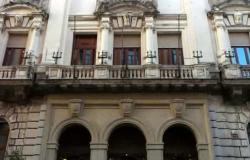The bill on the differentiated autonomy of the regions with ordinary statute it’s law. The final approval in the House arrived at 7.40 am on Wednesday 19 June, after passage in the Senate on 23 January. This is a purely procedural law to implement the reform of Title V of the Constitution implemented in 2001.
In 11 articles defines the legislative and administrative procedures for the application of the third paragraph of article 116 of the Constitution. Defines the agreements between the State and those Regions that ask for differentiated autonomy in the 23 matters indicated in the provision.
Within 24 months of the entry into force of the bill, the Government will have to pass one or more legislative decrees to determine the levels and amounts of the Lep. While the State and Regions, once started, will have 5 months to reach an agreement. The agreements can last up to 10 years and then be renewed. Or end earlier with at least 12 months’ notice.
Here is what the approved text provides
Lep compulsory for 15 subjectsThe Constitution, with articles 116 and 117 rewritten by the Amato government and approved in the 2001 referendum, has provided for 23 competing subjects that can be transferred to the 15 ordinary Regions with differentiated autonomy. The Calderoli reform provides for mandatory Lep on 15 subjects, entrusted to the Standard Requirements Technical Commission which will have to define them within two years.
The matters in question are: justice of the peace, which however will remain with the State; general rules on education; protection of the environment, ecosystem and cultural heritage; protection and safety at work; instruction; scientific research and innovation; Health; diet; the sports system; the government of the territory; civil ports and airports; large transport and navigation networks; the organization of communication; the production, transport and national distribution of energy; the valorisation of cultural and environmental assets and the promotion and organization of cultural activities.
Relations with Europe and regional banksThe 8 subjects that do not require Lep can be transferred very quickly to the Regions that request them. These are international relations and relations with the EU of the Regions; foreign trade; professions; civil protection; complementary and supplementary social security; the coordination of public finance and the tax system; rural banks, regional credit companies, land and agricultural credit institutions.
After 23 years of conflictual “devolution”, it is already time to take stock. Civil protection, created with Minister Zamberletti after the earthquake in Friuli in 1976, undoubtedly represents the virtuous model since it is coordinated by the Regions which “train” the teams of technicians to deal with emergencies. However, it will be complicated to manage rural banks and land credit institutions because with the Euro the powers are entrusted to the ECB in Frankfurt, which dictates the rules for banks of all levels.
Environment, ad hoc regulations on pollutantsWhat can actually change if environmental protection moves from Rome to Venice? The matter, submitted to Lep, is entrusted to the regional environmental agencies and therefore no organizational revolution is looming. However, the regulatory aspect may change: Veneto, for example, will be able to apply the hyper-restrictive rules on Pfas, introduced by the Zaia council to stem the Miteni disaster, but always rejected by the water court and the Ministry of the Environment in Rome because in conflict with EU directives.
The future of the chemical industry is at stake here: lowering the values of water discharges from production cycles can undoubtedly contribute to purifying rivers and the sea, but if the constraints are too rigid, companies could move from Veneto to abroad or in other regions. There will be a tug of war instead for the transfer of the Superintendencies: they now depend entirely on the Mibac and Franceschini has always raised a block of no. Will Minister Sangiuliano follow the same path?
Prof, rankings are no longer nationalThe school is the object of desire in Veneto and Lombardy, ready to introduce regional rankings for teachers. Calderoli has circumvented the obstacle to avoid the unions’ revolt, but Minister Valditara has already started discussions with Attilio Fontana. How will it end?
General matters regarding the school system are the responsibility of the government, which launched the “made in Italy” high schools with terrible results, while the reform of the ITS was welcomed with satisfaction by Confindustria and the labor market. Primary spending on education fell from 50.4 billion in 2000 to 47 billion in 2020, with a per capita value of 790.9 euros per inhabitant, 100 euros lower in the period considered by the Cohesion Agency. Lombardy used 15% of the resources, Campania 10.3. Veneto stopped at 8%, around 3.8 billion: the sharing of Irpef revenue always kicks in if the school is transferred to the Region.
Funds withheld from VAT and IrpefAutonomy introduces the mechanism of sharing the VAT and Irpef revenue accrued in the individual region to finance the skills transferred from the State. The Calderoli law does not provide for new Irpef surcharges, already applied after 2001 by the Municipalities and Regions on the pay slips of employees, also because the centre-right governments led by Berlusconi have abolished the IMU on first homes. And IRAP was also cancelled. What does this mean in concrete terms?
The health services called Lea, managed by the twenty Regions, were financed by the State in 2023 with 128 billion euros, 10.4 of which were allocated to Veneto. Today the money comes from Rome, with the autonomy of Palazzo Balbi and Azienda Zero they will instead be able to retain those 10 billion from VAT or Iperf revenue to pay doctors, nurses and keep the hospitals running. The same mechanism is repeated for the other matters to be defined in the agreements, the green light for which must come from Parliament.
Infrastructure, the management node of the new tendersDevolution can also involve strategic infrastructures that present profound imbalances between North and South: ports, airports, large railway and road networks. The high speed lines financed by the Pnrr to be completed by 2026 and the motorways, with expiring concessions, starting from the A4 Brescia-Padua with the Valdastico puzzle. The tenders under the exclusive competence of the Ministry of Infrastructure could also be managed by the Regions if Prime Minister Meloni decided to transfer the State’s capital assets to local authorities in the name of autonomy.
At Palazzo Chigi prudence prevails and it is remembered that airports are regulated by two national authorities: Enac and Enav which cannot be split up. The other issue concerns the large electricity distribution networks in the season of transition from hydroelectric to photovoltaic, with the South ready for redemption thanks to the power of the sun. Are Enel and large holding companies ready for the change of season?





